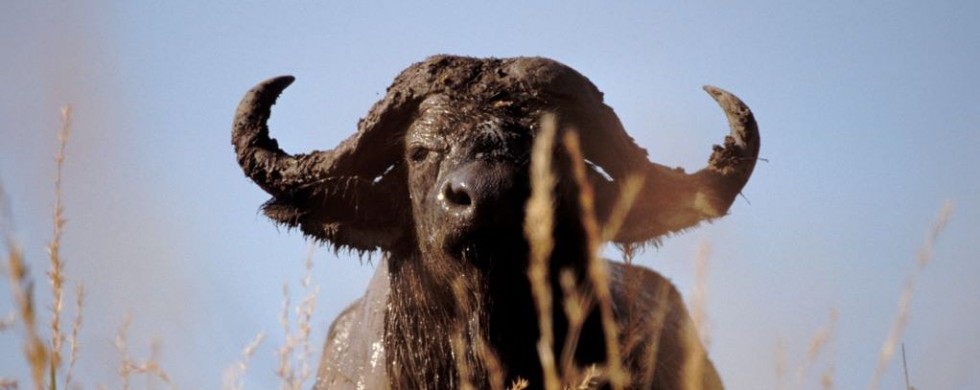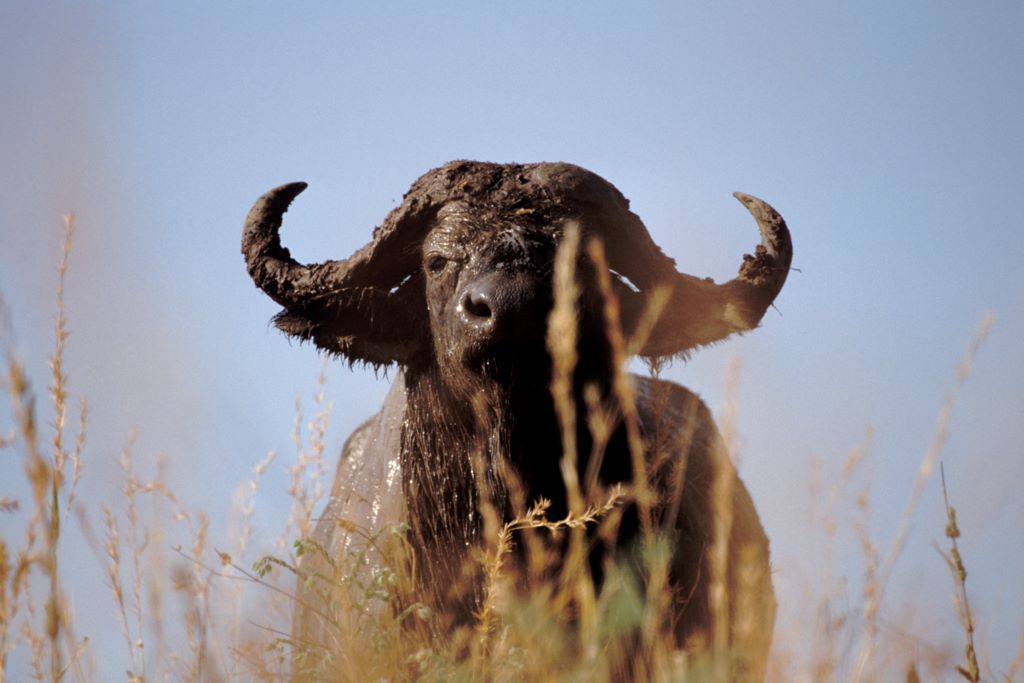
15
2009Are you looking at me?! – January 2009
Shot of the Month – January 2009
If you look at this photo and go “Whoa! This guy is scary!” then I have succeeded.
I chose this shot because I feel that it best captures the seething danger embodied by the Cape Buffalo (CB).
Let me repeat,
C-a-p-e B-u-f-f-a-l-o.
Not water buffalo.
While these animals may look similar, they are two very different creatures. The water buffalo lives in Asia, not Africa, is slightly larger, and has been domesticated. Only about 4,000 wild water buffalo exist in the world and they are declining fast. There are however about 140,000,000 domesticated water buffalo gently wandering around India (over half live there), Nepal, Pakistan, Bhutan, and Thailand. These animals have been domesticated for over 5,000 years and are used by farmers to toil fields and provide essential meat and milk to humans. Their dung can be used as fertilizer and fuel when dried.
Cape buffalos live only in Africa, have never been domesticated, and many consider them to be one of the most dangerous animals in the world. CBs have the honor of being one of the “Big Five” – a phrase used by big game hunters to describe the most difficult and dangerous animals to hunt on foot. Many hunters consider the CB to be the most dangerous of this illustrious group. The reason why? Well, let’s imagine that you are a hunter who shoots a Cape buffalo but the injury is not fatal. Most wounded animals would do their best to hide in the bush or slink away and recover. Not the Cape buffalo. Well, he will sneak away into the bush – not to hide, but to begin his assault on you. He will stalk you. He will follow you. He may circle back on the trail and ambush you from a different direction. He won’t stop until he has gored you or stomped you to death. The hunter becomes the hunted.
So, uh, avoid ticking off a Cape buffalo.
Counter to what you might think, if you were walking through the bush and stumbled upon a herd of buffalo you would most likely be safe. Cape buffalo feel safe and confident when in a herd so they do not feel the need to charge unless seriously provoked. It is the lone buffalo that you need to worry about. Male buffalo get irritable as they get old (like many of their human counterparts) and typically will leave the herd and live a solitary life. If you find a buffalo on his own he may be injured, sick, or in the case of old males, just plain cranky. Regardless of the cause, a lone buffalo will feel insecure and threatened when encountered and will often lash out. Stay very, very clear of a lone buffalo.
Cape buffalo are fierce fighters and when attacked often respond as a unified force. There are many reports of herds of buffalo fighting off hunting lions. One such scene has been caught in a now-famous YouTube video. Click here to see the luckiest Cape buffalo calf in the world:
http://www.youtube.com/watch?v=LU8DDYz68kM
Bonus: A reward for those of you who stuck it out to the end of this missive. Here is the list of the “Big Five” (I know it has been driving you crazy). In no particular order:
- Lion
- Leopard
- Rhino
- Elephant
- Cape Buffalo
Happy New Year!

